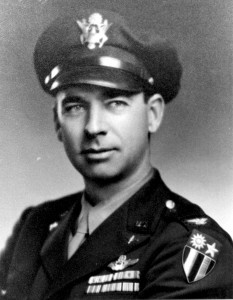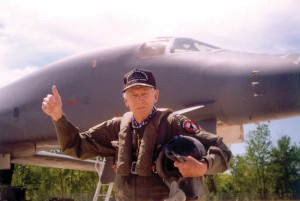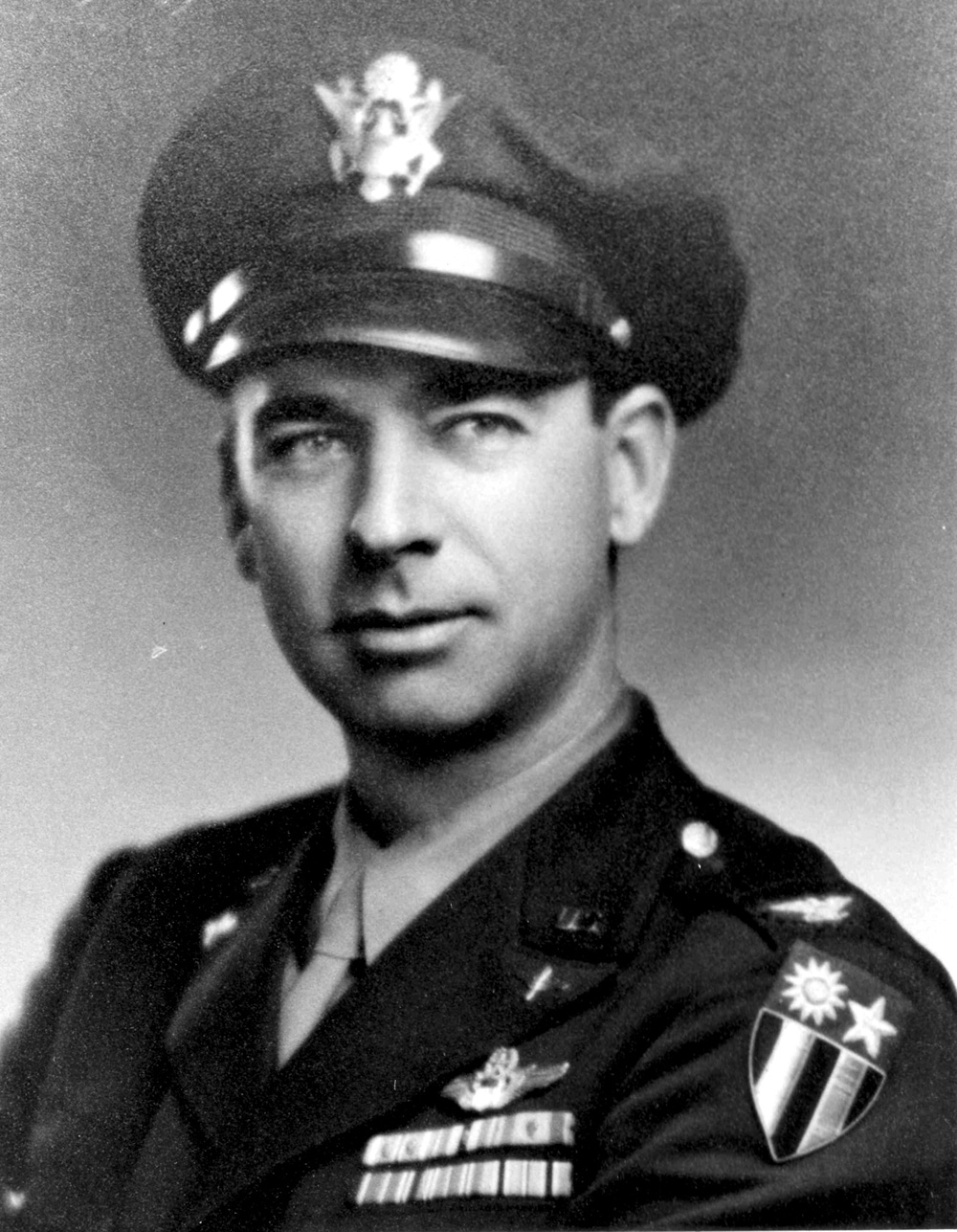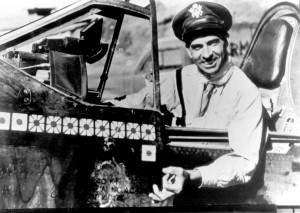Courtesy U.S. Air Force Public Affairs
Brigadier General Robert L. Scott, the famed World War II fighter ace who penned his memoirs in a best-selling book, “God is My Co-Pilot,” passed away February 27 in Warner Robins, Ga., after a stroke. He was 97.

In his first month of combat, Robert Scott logged 215 hours of flight time and quickly became a double “ace” with 13 confirmed aerial victories.
Born Robert Lee Scott Jr. in Waynesboro, Ga., on April 12, 1908, to Robert Lee Scott Sr. and Ola Burckhalter, Scott would go on to become one of the nation’s greatest aviators.
After he enlisted in the Georgia National Guard, President Hoover appointed him to West Point in 1928. When he graduated in 1932, he spent the summer sailing to Europe. He bought a motorcycle in France and motored across Europe and Asia, returning after reaching Mount Ararat. Upon his return to the U.S., he joined the Army Flying Center at Randolph Air Base, Texas. Scott earned his wings on Oct. 17, 1933, and went to his first assignment at Mitchell Field, N.Y.
In 1934, President Roosevelt cancelled commercial air mail contracts and gave the duty to the Air Corps. Scott immediately volunteered and flew airmail in an open-cockpit plane through the “Hell Stretch,” as it was known then, from Newark, N.J., to Cleveland, Ohio. He then served a tour at Albrook Field, Panama. After that, he became a flying instructor and was promoted to lieutenant colonel during the expansion program before World War II.
When the war broke out, Scott, then 33, was running the largest flight training academy in the country, the Cal Aero Academy in California. To his dismay, he didn’t receive orders to fight. He wrote numerous letters, begging for assignment to a combat flying unit. He was told he was too old to be a fighter pilot, but he was needed to train younger pilots.
But one night, he received a call from the Pentagon. An intelligence officer asked him if he had ever flown a B-17 Flying Fortress. Scott, who had never flown the plane, said yes. He received orders to the secret Task Force Aquila, which would fly B-17s to China for the bombing of Japan. After days of flying across the Atlantic, Africa, Middle East and China, he landed only to receive the news that the mission had been scrubbed; the Japanese had captured their planned takeoff bases in the Philippines.
He flew C-47 Gooney Birds over the Himalayas instead, flying fuel and supplies from India to combat bases in China. Soon Scott, by then a colonel, met Brig. Gen. Claire Chennault, the tough commander of the American Volunteer Group in China, known as the Flying Tigers. Scott convinced the commander to let him use a P-40 to fly escort missions for the transports, and he was soon flying daily combat missions in addition to his escort duty.
In his first month of combat, he logged 215 hours of flight time and quickly became a double ace with 13 confirmed aerial victories. On July 4, 1942, at the request of Chiang Kai-shek, Scott was given command of the 23 Fighter Group of the China Air Task Force, the Army Air Force unit activated with remnants of the Flying Tigers. It later became the 14th Air Force.
In January 1943, Scott was ordered back to the United States, to make public relations speeches to war plant workers. That same year, he wrote “God Is My Co-Pilot.” He later served as technical advisor to Warner Brothers, during the making of the movie based on his book.
After the war, Scott served at the Pentagon, on a task force whose mission was to win autonomy for the Air Force, separating it from the Army. They were successful, and the Air Force split from the Army in September 1947. That year he took command of the Air Force’s first jet fighter school at Williams Field, Ariz. He then moved to Europe in 1950 to command the 36th Fighter Wing at Furstenfieldbruck, Germany.
In 1954, after graduating from the National War College, he was promoted to brigadier general and was assigned as Air Force director of information. He retired in 1957.
After retiring, Scott pursued his lifelong dream of walking the Great Wall of China. For two years, he wrote more than 300 letters to Chinese authorities, asking for official permission. Finally, just to get inside China, he signed on as a tourist in a package tour of the country.
While there, he managed to get a visa and travel permit. In 93 days—with a 70-pound backpack, which included 1,200 oatmeal cookies he baked himself—he walked the 2,000 miles of the Great Wall. He had completed Marco Polo’s trip that had fascinated him for 57 years. On a 9,000-foot mountain overlooking Kunming—General Chennault’s home base in World War II—he left an engraved stone memorial to his former boss that read, “General Claire Lee Chennault. We, your men, honor you forever.”
In 1976, with special permission from Gen. Charles Gabriel, Air Force chief of staff, he flew an F-16 Fighting Falcon. Ironically, his first military airplane had also been a Falcon, a Curtiss O-1G fabric-covered biplane.
In 1986, Scott traveled to in Warner Robins, for the unveiling of an exhibit of his memorabilia at the Museum of Aviation at Robins Air Force Base. The next year, he moved to Warner Robins to become the head of the Heritage of Eagles Campaign, which ultimately raised $2.5 million for the construction of the museum’s three-story Eagle Building.

On April 2, 1997, in celebration of his 89th birthday, Brig. Gen. Scott flew his last flight, in a B-1 Lancer bomber, from Robins’ 116th Bomb Wing. His flight log closed with more than 33,000 hours in the air.
In 1988, Scott released his autobiography, “The Day I Owned the Sky.” That year, at age 82, he was flown in an F-15 Eagle out of Dobbins Air Force Base, Ga. On April 2, 1997, in celebration of his 89th birthday, Scott flew his last flight, in a B-1 Lancer bomber, from Robins’ 116th Bomb Wing. His flight log closed with more than 33,000 hours in the air—a total few pilots have reached.
In the last two decades of his life, Scott continued to work tirelessly at the Museum of Aviation, helping to raise millions of dollars to develop the heritage and education center. His legacy, he said, was to “teach the younger generation that if we are strong, we will never have to endure another tragedy like World War II.”












